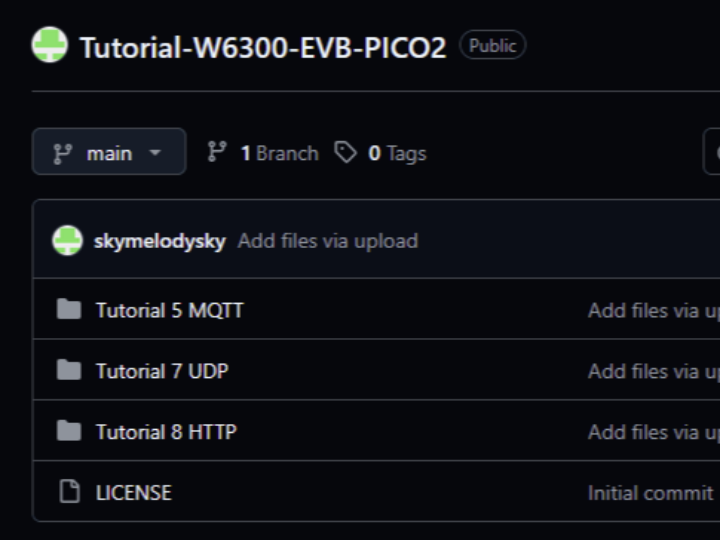Tutorial-W6300-EVB-PICO2
Tutorial-W6300-EVB-PICO2

Overview
The project titled Tutorial-W6300-EVB-PICO2 showcases how to use the EVB-PICO2 board built around the WIZnet W6300 Ethernet controller. The board pairs a microcontroller (either RP2040 or RP2350 variant) with the W6300 chip and demonstrates how to get wired Ethernet up and running via QSPI/host interface. It’s an excellent reference for embedded makers wanting high-speed, low-overhead Ethernet in compact systems.
🛠 What It Does
Demonstrates the wiring and configuration required to get the W6300 module working on the EVB-PICO2 board.
Provides example firmware to interface the board via QSPI (Quad-SPI) or high-speed host bus with the W6300’s built-in TCP/IP engine.
Shows how to boot, initialize, assign IP addresses (DHCP or static), open sockets, and perform network tests (e.g., ping, TCP/UDP).
Supports multisocket usage — typically up to 8 sockets thanks to the W6300’s architecture.
Offers useful starting points for applications such as web-servers, data streaming, or IoT gateways using wired Ethernet rather than WiFi.
➕ Why It’s Useful for Makers
The hardware TCP/IP stack of the W6300 offloads much of the network protocol burden from the MCU, making it easier to build reliable Ethernet-aware devices.
The EVB-PICO2 board form factor is compact and maker-friendly, letting you prototype quickly without long wiring setups.
Because the board uses QSPI (rather than slower SPI) the throughput can be significantly higher — especially useful for streaming or data-intensive tasks.
For makers working in the wired networking domain (industrial IoT, home automation, data acquisition), this project shows a clear path to integrating a professional-grade Ethernet controller in a maker layout.
⚠️ Considerations & Things to Monitor
Although setup is straightforward, you must ensure the pin mapping and QSPI host interface are correctly configured for your MCU variant. Mistakes here can cause non-responsive Ethernet.
Power supply and signal integrity matter: the high-speed QSPI lines and Ethernet PHY require careful layout and stable 3.3V supply to avoid glitches.
While the example covers basic connectivity and socket management, production-grade features (e.g., SSL/TLS, large packet performance, failover logic) will need extra firmware work.
If repurposing the board for applications other than basic Ethernet connectivity (e.g., high-speed streaming, multi-client servers), check buffer sizes, throughput limits, and resource consumption.
👤 Attribution
This project was developed by an embedded-systems hobbyist and shared publicly. All credit belongs to the original author.
⚠️ Disclaimer: We are featuring this project to inform and inspire our community. We do not claim ownership of the code, design or hardware.
